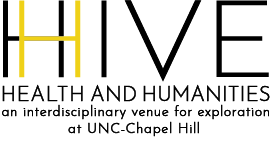While the COIVD-19 pandemic has been covered extensively by news media, one conversation is often left unspoken: ableism is unjustly placing disabled people at a higher risk of COVID-19 infection and mortality. An ableist perspective implements “biased attitudes and beliefs” towards disability that serve to harm people with disabilities through discrimination, resulting in disabled people being viewed as intrinsically different from nondisabled people.[1] Bodies and minds that stray from the ableist ideal are considered abnormal, thus opening an avenue through which discrimination can occur. As a result, disabled people face access barriers in many contexts, including accessing treatment during the COVID-19 pandemic. Current rationing policies categorically exclude vulnerable populations, such as disabled and chronically ill people, from ventilator access under the guise of public health.[2] Thus, people with physical and mental disabilities are disproportionately impacted by COVID-19 not only because they have a higher risk of serious complications from the disease, but also because ableism creates structural barriers to lifesaving healthcare.
While disability alone does not place an individual at a higher risk of severe COVID-19 disease, disability is an important risk factor in both transmission and severity of COVID-19. According to the U.S. Centers for Disease Control and Prevention (CDC), three broader “disability types” have heightened risk for becoming infected: 1) mobility impairments 2) cognitive impairments and 3) communication impairments.[3] Furthermore, the severity of COVID-19, which is linked to increased mortality, is correlated with underlying medical conditions. Importantly, people with disabilities are “three times more likely than [people] without disabilities to have heart disease, stroke, diabetes, or cancer”.[3] Thus, both cognitive and physical disabilities lead to a heightened risk of infection and mortality from COVID-19.
This heightened risk, coupled with ableism, makes disabled people especially vulnerable to severe illness and death. For example, in a housing community for people with disabilities in Bayville, New York, four out of every five residents tested positive for COVID-19 within two weeks after reports of the first symptoms of COVID-19 in the community.[4] This effect is not limited to Bayville. Although public health data regarding COVID-19 demographics remains limited, within the state of New York nearly 10%, of the 1,100 people considered “developmentally disabled,” have died as a result of COVID-19, a mortality rate nearly three times as high compared to the general population.[4] While it is simple to attribute an 80% infection rate to the various illnesses that Bayville Community residents have, ableism has constructed an environment in which high-risk people must live together. Society sequesters many disabled people in disability group housing both due to able-bodied people’s anxiety towards disability and the fact that the environment is not built for disabled for people. Group housing can provide the accommodations that disabled people need but results in people living in close proximity to one another, leading to higher infection rates.
Moreover, ableist assumptions about the residents of facilities like Bayville tend to downplay prevention. As New York Times writer Danny Hakim puts it, in this context “discussions of social distancing or handwashing [were] moot.”[4] Importantly, this conversation leaves out the voices of people with disabilities. Certainly, there are residents whose impairments make it difficult for them to understand social distancing, yet such a broad generalization incorrectly categorizes an incredibly diverse group of people. Even within communities for disabled people, ableism actively plays a critical role in forestalling COVID-19 prevention due to assumptions that administrators make about disability that result in a deemphasis of prevention.
In addition to increased risk of exposure to and severe complications from COVID-19, disabled people also face significant barriers to receiving care, which may be reflected in the disproportionately high mortality rate for people with disabilities. With a strained health care system, many states are implementing health care rationing systems that deprioritize disabled lives. For instance, the state New York, which has already seen over 300,000 total cases,[5] has instituted guidelines for ventilator access during health crises that has ableism built into its framework.
When the health care system is strained by things like shortages of ventilators, the state recommends the application of “exclusion criteria” to all adult patients; those that meet the exclusion criteria are not granted immediate access to ventilators and medical care. These criteria are based on judgments of people’s current functional status and long-term prognosis. Among the broad categories of excluded people are those with recurrent cardiac arrests, some traumatic brain injuries, and irreversible low blood pressure. Even worse, the guidelines subject chronic ventilator users – those who have already been using ventilators – to the exclusion criteria if they arrive at any acute care facility, opening up the possibility for disabled people to be stripped of their ventilators if someone else is deemed worthier. This is intended to “maximize resources and lives saved,”[6] yet determining who is worthy of a ventilator is not an objective decision. Rather, it is a subjective decision influenced by ableism. It is evident that these guidelines unambiguously discriminate against disabled people, as many of the exclusion criteria are chronic conditions that can lead to disability. Furthermore, the guidelines permit flexibility in expanding the aforementioned exclusion criteria.[6] As a result, there is potential for preventing more disabled people from accessing treatment for COVID-19 than what is expressly stated in New York’s guidelines.
Reasons behind these discriminatory guidelines are outlined by Bob McGuire, director of the nonprofit that developed the Bayville facility, CP Nassau, when he explains that “people discount people with disabilities and presume they understand them when they don’t know them. They think their lives are not worth the same as yours or mine, and that’s just not true.”[4] Activist groups have also underscored how ableism drives ventilator rationing policies. In a federal complaint against the New York State Department of Health filed in April, Disability Rights New York claims that these policies violate the ADA and Section 504 of the Rehabilitation Act of 1973 by “disqualifying people from ventilator access simply because their disabilities may slow recovery and intensify COVID-19 symptoms.”[7] Furthermore, they challenge the idea of reallocating ventilators from disabled people to able-bodied people, relating ventilator reallocation to “taking life-sustaining insulin injections from one Type 1 diabetic and providing it to another Type-1 diabetic” simply because they met certain subjective, ableist criteria.[7] These complaints emphasize the effects of these discriminatory guidelines on disabled people, highlighting the degree to which disabled people are excluded from otherwise public services.
Understandably, with limited resources during a crisis, health care equipment may need to be rationed. However, discriminatory categorical exclusion policies are unnecessary. By selectively considering only a disabled patient’s current functional status and long-term prognosis rather than subjecting all patients to the same criteria fundamentally violates the bioethical principle of justice, or equal opportunity for care. Some have called for a multi-principle allocation framework, one that does not make ill-informed allocation judgments based on broad categorical exclusions.[2]
The COVID-19 pandemic has shown that both biological barriers and social or structural barriers make disabled people more vulnerable. Ableism constructs social factors that both places disabled lives at a higher risk of COVID-19 and prevents disabled people from receiving treatment from the disease. Discriminatory practices in public health will continue to persist unless ableism is thoroughly challenged and delegitimized in official health policy. Policymakers must refuse to discount disabled people from access to health care simply because of disability status. Constructing a society in which disability is valued and understood as normal human variation and disabled people are not considered second-class citizens undeserving of access to public benefits will serve to protect disabled people from social barriers, especially during a crisis.
[1] Walker, Nick. “Throw Away the Master’s Tools: Liberating Ourselves from the Pathology Paradigm.” Neurocosmopolitanism, 16 Aug. 2013, neurocosmopolitanism.com/throw-away-the-masters-tools-liberating-ourselves-from-the-pathology-paradigm/.
[2] White, Douglas B., and Bernard Lo. “A Framework for Rationing Ventilators and Critical Care Beds During the COVID-19 Pandemic.” The Journal of the American Medical Association, 2020, pp. 1–2., doi:10.1001/jama.2020.5046.
[3] COVID-19: People with Disabilities.” Centers for Disease Control and Prevention, Centers for Disease Control and Prevention, 7 Apr. 2020, www.cdc.gov/coronavirus/2019-ncov/need-extra-precautions/people-with-disabilities.html.
[4] Hakim, Danny. “’It’s Hit Our Front Door’: Homes for the Disabled See a Surge of Covid-19.” The New York Times, The New York Times, 8 Apr. 2020, www.nytimes.com/2020/04/08/nyregion/coronavirus-disabilities-group-homes.html.
[5] “How Many in Tri-State Tested Positive for Coronavirus? See Latest Cases by the Numbers.” NBC New York, NBC Universal Inc. 11 May, 2020, https://www.nbcnewyork.com/news/local/how-many-in-tri-state-have-tested-positive-for-coronavirus-here-are-latest-cases-by-the-numbers/2317721/
[6] Ventilator Allocation Guidelines. New York State Department of Health, New York State Task Force on Life and the Law, Nov. 2015. https://www.health.ny.gov/regulations/task_force/reports_publications/docs/ventilator_guidelines.pdf. Accessed 11 April 2020.
[7] Ventilator Rationing OCR Complaint. United States Department of Health and Human Services, 3 Apr. 2020, https://www.documentcloud.org/documents/6825213-2020-04-03-Ventilator-Rationioning-OCR-Complaint.html. Accessed 11 April 2020.
Taha Lodhi is an undergraduate student at UNC majoring in biology with chemistry and medical anthropology minors. He is pursuing a career in medicine, partly driven by his academic interests in medical anthropology and health humanities. He hopes to work for vulnerable, underserved populations with the greatest need for medical care.



2 Responses to “Careless Healthcare: Ableism During COVID-19 by Taha Lodhi”
Jumping to the front of the vaccine line? - Catholic Mass Online Search
[…] Scholars have documented centuries of abusive experimentation, health care segregation and coercive reproductive policies based in racism and ableism. Studies and personal narratives reveal ongoing medical discrimination that results in devastating outcomes such as higher maternal mortality rates for Black and Indigenous women and care rationing that devalues disabled lives. […]
Jumping to the front of the vaccine line? – christian-99.com
[…] Scholars have documented centuries of abusive experimentation, health care segregation and coercive reproductive policies based in racism and ableism. Studies and personal narratives reveal ongoing medical discrimination that results in devastating outcomes such as higher maternal mortality rates for Black and Indigenous women and care rationing that devalues disabled lives. […]